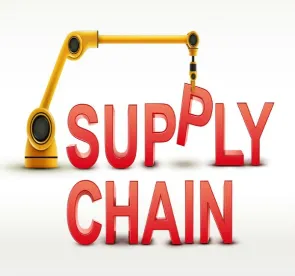Take a simple fact pattern: A sells widgets to B, and B re-sells the widgets to C. Something goes wrong with the widgets and C needs to have them repaired or replaced, or has a claim for damages. Who does C claim against?
One concept that often comes up in negotiations and contracts is a so-called “pass through” warranty: the concept being that the reseller obtains a warranty from a supplier, and “passes” the benefit “through” to their customer. Even though this language sometimes shows up in final contracts, it can be legally ambiguous – there are several ways to accomplish this economic goal, and the precise method can end up having a big impact on the risk allocation between the parties. Before going into your next supply contract negotiation, consider your options in more detail:
1) Back-to-back warranties. The supplier provides a warranty to the reseller, who then provides the same warranty to the customer. Any claims by the customer will first go to the reseller, and the reseller then has to figure out how to get compensated by the supplier.
This arrangement is often suitable where the supplier is integrating several products or services from different suppliers, and needs to provide a single coherent warranty for the entire package as delivered to the customer. It is also easy for all parties to understand – the supplier does not need to worry about the terms of the customer’s contract, or vice versa. On the other hand, this structure is inherently risky for the reseller. If the reseller’s warranty is broader than the supplier’s warranty, or if the supplier’s warranty becomes invalid or unenforceable, the reseller can face liability that is not covered by the supplier’s warranty. This can particularly be problematic when governing law and dispute resolution terms differ between the customer’s contract and the supplier’s contract: a judge in Guangzhou or Frankfurt will likely have different views on liability than a judge in New York.
2) The equivalent-relief warranty. This is a variant of the back-to-back warranty structure in which the customer’s rights against the reseller are limited to the reseller’s rights against the supplier. In other words, the reseller (theoretically) can never owe more obligations to the customer than the corresponding supplier owes to the reseller.
This structure allows the supplier to manage its risk through negotiation with the reseller, while keeping the reseller protected from warranty claims. The main problem with this structure is that customers may be reluctant to accept it: there is less leeway for the customer to negotiate the warranty terms, and if multiple suppliers are involved, it may be extremely difficult for a customer to assess their risk.
3) The assignable warranty. The supplier provides a warranty to the reseller (often as a schedule to the purchase and sale agreement), which the reseller assigns to the customer – effectively re-selling and transferring its own warranty rights to the customer. The customer then sends any warranty claims directly to the supplier.
Some resellers like this structure because they are removed from the claims process entirely, and some suppliers and customers like this structure because they can resolve issues directly between each other. On the other hand, suppliers sometimes do not want to deal directly with end users, resellers sometimes do not want to relinquish control over the claims process, and customers sometimes prefer to deal with the reseller. This structure also minimizes the customer’s ability to negotiate the warranty.
4) The indemnity-backed warranty. The reseller provides a warranty to the customer, and the supplier indemnifies the reseller to protect them against warranty claims that arise due to the supplier’s fault.
This can be a good structure for encouraging collaboration between the supplier and reseller in responding to claims, but requires careful drafting and negotiation to ensure that both sides’ interests are protected. In particular, the supplier will want to have control over the scope of the warranty claims that are covered by the indemnity, as well as the reseller’s response strategy to any warranty claim. Like the back-to-back structure, this structure leaves the reseller open to potential liability if the supplier’s indemnity becomes invalid or unenforceable.



 />i
/>i

